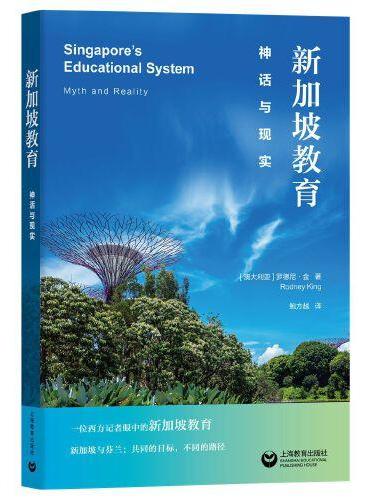丛书总序王守仁i
中文导读王立非v
preface xxi
text credits xxv
part i. foundations for classroom practice
chapter igetting started
a classroom observation,
analyzing the lesson,
topics for discussion, action, and research,
for your further reading,
chapter 2a "methodical" history of language teaching
approach, method, and technique,
changing winds and shifting sands,
the grammar translation method,
gouin and the series method,
the direct method,
the audiolingual method,
cognitive code learning,
"designer" methods of the spirited 1970s,
community language learning,
suggestopedia,
the silent way,
total physical response,
the natural approach,
functional syllabuses,
topics for discussion, action, and research,
for your further reading,
chapter 3the postmethod era: toward informed approaches
intrinsic motivation in education,
intrinsic motivation in the second language classroom,
topics for discussion, action, and research,
for your further reading,
part ii. contexts of learning and teaching
chapter 6teaching across age levels
teaching children,
intellectual development,
attention span,
sensory input,
affective factors,
authentic, meaningful language,
teaching adults,
teaching teens,
topics for discussion, action, and research,
for your further reading,
chapter 7teaching across proficiency levels
defining proficiency levels,
teaching beginning levels,
teaching intermediate levels,
teaching advanced levels,
topics for discussion, action, and research,
for your further reading,
chapter 8sociocultural, political, and institutional contexts
cultural contexts,
second and foreign language contexts,
english as an international language,
normative english-speaking teachers,
language policy issues,
institutional contexts,
elementary and secondary schools,
post-secondary and adult education,
institutions of higher education,
topics for discussion, action, and research,
for your further reading,
part iii. designing and impi.ementing classroom lessons
chapter 9curriculum design
curriculum development: an overview,
situation analysis,
needs analysis,
problematizing,
specifying goals,
conceptualizing a course syllabus,
selecting textbooks, materials, and resources,
assessment,
program evaluation,
topics for discussion, action, and research,
for your further reading,
chapter 10lesson planning
format of a lesson plan,
guidelines for lesson planning,
sample lesson plan,
topics for discussion, action, and research,
for your further reading,
chapter 11techniques and materials
techniques redefined,
categorizing techniques: a bit of history,
a taxonomy of techniques,
textbooks,
textbook adaptation,
textbook evaluation,
other texts and visual aids,
topics for discussion, action, and research,
for your further reading,
chapter 12technology in the classroom
non-computer-based technology,
computer assisted language learning call,
call, cmc,tmll, or what?,
principles and benefits of call,
uses of call in the language classroom,
topics for discussion, action, and research,
some useful web resources,
for your further reading,
chapter 13initiating interaction in the classroom
what is interaction?,
interactive principles,
roles of the interactive teacher,
foreign language interaction analysis,
questioning strategies for interactive learning,
topics for discussion, action, and research,
for your further reading,
chapter 14sustaining interaction through group work
advantages of group work,
excuses for avoiding group work,
implementing group work in your classroom,
evaluating classroom language,
selecting appropriate group techniques,
planning group work,
monitoring the task,
debriefing,
topics for discussion, action, and research,
for your further reading,
chapter 15classroom management
the physical environment of the classroom,
your voice and body language,
unplanned teaching: midstream lesson changes,
teaching under adverse circumstances,
teachers'' roles and styles,
creating a positive classroom climate,
topics for discussion, action, and research,
for your further reading,
chapter 16strategies-based instruction
strategic investment,
good language learners,
styles of successful language learning,
awareness and action,
developing student self-awareness of styles,
how to teach strategies in the classroom,
"packaged" models of sbi,
topics for discussion, action, and research,
for your further reading,
part iv. teaching language skills
chapter 17integrating the "four skills"
why integrated skills?,
models of skills integration,
content-based instruction,
task-based language teaching,
theme-based instruction,
experiential learning,
the episode hypothesis,
an integrated lesson,
topics for discussion, research, and action,
for your further reading,
chapter 18teaching listening
listening comprehension in pedagogical research,
an interactive model of listening comprehension,
types of spoken language,
what makes listening difficult?,
microskills and macroskills of listening,
types of classroom listening performance,
principles for teaching listening skills,
listening techniques from beginning to advanced,
assessing listening in the classroom,
understanding the terms "assessment" and "test,"
assessing types of listening and micro- and macroskills,
topics for discussion, research, and action,
for your further reading,
chapter 19teaching speaking
oral communication skills in pedagogical research,
types of spoken language,
what makes speaking difficult?,
micro- and macroskills of oral communication,
types of classroom speaking performance,
principles for teaching speaking skills,
teaching conversation,
teaching pronunciation,
focus on form and error treatment,
the role of feedback,
when and how to treat errors,
assessing speaking in the classroom,
item types and tasks for assessing speaking,
evaluating and scoring speaking tasks,
topics for discussion, action, and research,
for your further reading,
chapter 20teaching reading
research on reading a second language,
genres of written language,
characteristics of written language,
micro- and macroskills for reading comprehension,
strategies for reading comprehension,
types of classroom reading performance,
principles for teaching reading skills,
two reading lessons,
assessing reading,
topics for discussion, action, and research,
for your further reading,
chapter 21teaching writing
research on second language writing,
types of written language,
characteristics of written language: a writer''s view,
micro- and macroskills for writing,
types of classroom writing performance,
principles for teaching writing skills,
assessing writing,
evaluation checklists,
writing assessment tasks,
topics for discussion, action, and research,
for your further reading,
chapter 22form-focused instruction
the place of grammar,
to teach or not toteach grammar,
issues about how to teach grammar,
grammar techniques,
grammar sequencing in textbooks and curricula,
current issues in vocabulary teaching,
principles for teaching vocabulary,
topics for discussion, action, and research,
for your further reading,
part v. assessing language skills
chapter 23language assessment: principles and issues
testing, assessing, and teaching,
principles of language assessment,
practicality,
reliability,
validity,
content validity,
face validity,
construct validity,
authenticity,
washback,
kinds of tests,
proficiency tests,
diagnostic tests,
placement tests,
achievement tests,
aptitude tests,
historical developments in language assessment,
current issues in language assessment,
large-scale language proficiency testing,
authenticity,
performance-based assessment,
challenges from innovative theories of intelligence,
expanding "alternatives" in the classroom-based assessment,
ethical issues: critical language assessment,
topics for discussion, action, and research,
for your further reading,
chapter 24classroom-based assessment
norm-referenced and criterion-referenced tests,
some practical steps to test construction,
turning existing tests into more effective procedures,
alternatives in assessment,
portfolios,
journals,
conferences,
observations,
serf- and peer-assessments,
scrutinizing the alternatives,
maximizing practicality and reliability,
performance-based assessment,
topics for discussion, action, and research,
for your further reading,
part vi. i.ifelong i.f. arning
chapter 25teacher development
peak performers,
the "good" language teacher,
classroom observation,
classroom-based "action" research,
teacher collaboration: learning from each other,
journals,teaching portfolios, reading, and writing,
topics for discussion, action, and research,
for your further reading,
chapter 26teachers for social responsibility
critical pedagogy,
teaching as a subversive activity,
some cautionary observations,
hot topics in the language classroom,
guidelines for dealing with controversial issues in the
classroom,
examples of socially responsible teaching from around the
world,
moral dilemmas and moral imperatives,
agents for change,
topics for discussion, action, and research,
for your further reading,
bibliography,
name index,
subject index,
|









